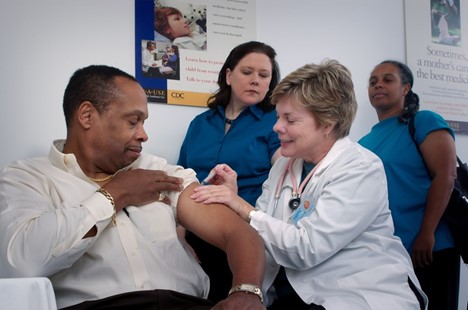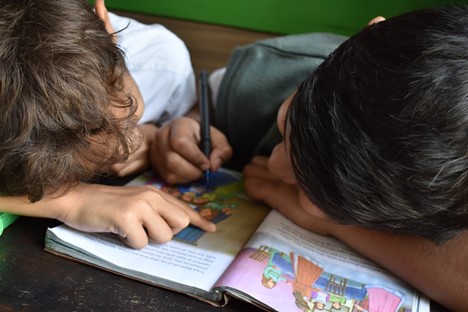- Hyderally & Associates P.C | Employment Lawyers NJ, NY
- (973) 509-8500
- tyh@employmentlit.com
Montclair Teachers Scheduled to Return to the Classroom Pre-Vaccination: Must they Risk their Lives for their Livelihoods?
New Administration Aims to End Mandatory Arbitration and Non-Compete Agreements
January 27, 2021Growing Recognition of Implicit Bias
February 3, 2021Montclair Teachers Scheduled to Return to the Classroom Pre-Vaccination: Must they Risk their Lives for their Livelihoods?
By: Jennifer Vorih, Esq. and Ty Hyderally, Esq.
For Montclair teachers, parents, students, and school staff, it’s been a long haul since March 16, 2020, when Montclair public schools changed to remote learning. This was supposed to be a temporary measure until New Jersey, the United States, and the world got COVID-19 under control. But that “temporary” measure has now gone on for more than ten months. For the umpteenth time, Montclair public schools are now scheduled to open for in-person learning, starting on January 25, 2021. However, there are serious questions as to whether this is wise and significant concerns for teachers, students, parents, and staff.

A big question regarding opening schools right now for hybrid learning (a mix of remote learning and in-person learning) is whether this is the right time, given that the first two vaccines have just recently become available. Vaccinations are being conducted in phases, for priority groups. So far, only healthcare personnel, long-term care residents and staff, first responders, and individuals who are at high risk of serious complications from the coronavirus are eligible to be vaccinated. Thus, teachers and school staff (other than school nurses) are only able to be vaccinated if they are high risk individuals. The two vaccines which are currently available are very highly effective, with some caveats. Both vaccines require two inoculations. For one, individuals must wait 21 days after the first shot before getting the second shot. For the other, individuals must wait 28 days. 14 days after that, both vaccines are highly effective at preventing infection in the vaccinated individual. Thus, even if teachers were able to get their first shot today, they would not be maximally protected from infection for another five to six weeks, and questions remain as to whether they could still spread the virus to other teachers, staff, and students. Since most teachers and other school staff are not yet eligible to receive the vaccine, sending them back to work with each other and with scores of unvaccinated children, is very risky. Given that it is only a matter of weeks before they could be vaccinated and maximally protected from the virus, sending them back to work in these conditions seems premature and foolhardy. Further, neither of the two vaccines currently available is approved for use in children. Thus, in-person teaching would subject teachers and staff to unvaccinated children for the foreseeable future.
Because the rate of COVID transmission is so high at this time, re-opening schools is not a simple, one-time act. It requires constant vigilance in terms of mask-wearing, social distancing, disinfecting, and monitoring students and staff for symptoms. And when one student comes to class with COVID, the whole class (and others who were exposed) must quarantine. At this time, the quarantine period is a minimum of 14 days, but the science is constantly developing and thus the numbers on this are constantly changing. What constitutes a minor or significant symptom of COVID is also ever-evolving, and the definitions of casual and close contacts must be taken into account when determining who should isolate and who should quarantine after an exposure. What all of this means is that, in reality, many schools and many classes will simply yo-yo back and forth between hybrid and fully remote learning until the pandemic is under control.
That, of course, is not the biggest risk here. The biggest risk is that a teacher, a staff member, a student or a family member will contract COVID, which could result in a traumatic hospital stay, life-long health complications, or even death.

Underpaid teachers and other school staff may be used as cannon fodder in Montclair. And for what? Putting teachers and other school staff at risk for the convenience of parents seems unreasonable, but is even more so when one considers that parents will not gain much in convenience. Having elementary school children attend school in person for a few hours, twice a week, would not make parents’ lives much easier. In fact, the logistics of arranging for those few hours twice a week and getting kids to and from school would make the lives of many parents more difficult. As for the risks to children of continuing to learn remotely, continuing to spend far too much time on screens, and continuing to spend not nearly enough time interacting with others in person, those risks exist. We do not yet know the cost to our children of these lost months. But we do know something about the cost to teachers and school staff of losing their health, or their lives.
We look forward to a time when our teachers and other school staff will not have to decide whether to risk their lives for their livelihoods.
En nuestra firma hablamos español. This blog is for informational purposes only. It does not constitute legal advice, and may not reasonably be relied upon as such. If you face a legal issue, you should consult a qualified attorney for independent legal advice with regard to your particular set of facts. This blog may constitute attorney advertising. This blog is not intended to communicate with anyone in a state or other jurisdiction where such a blog may fail to comply with all laws and ethical rules of that state of jurisdiction.

